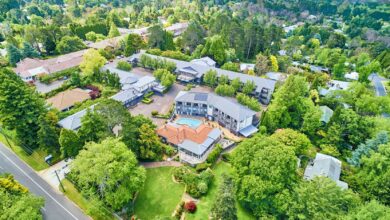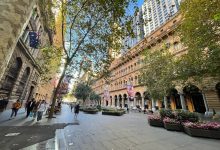
Super investment package for overseas investment
The bulk of this capital will come from Australia’s pension (superannuation) system in which assets under management are set to pass USD 2.8 trillion by 2020.
USD 75 billion of this is likely to be available for overall offshore investment of which, by current measures, 10 % (USD 7.5 billion) will be allocated to international real estate.
A new report released by Jones Lang LaSalle’s International Capital Group highlights the increasing amount of Australian capital expected to be invested into offshore commercial real estate markets by 2020. According to the report, ‘The rise, fall and future intentions of Australian offshore investment’, the bulk of this capital will come from Australia’s pension (superannuation) system in which assets under management (AUM) are set to pass USD 2.8 trillion by 2020. USD 75 billion of this is likely to be available for overall offshore investment of which, by current measures, 10% (USD 7.5 billion) will be allocated to international real estate.
 Maintained by compulsory contributions, Australia’s Superannuation system is, by some measures, the fourth largest asset pool in the world with real estate accounting for around 10% of its current USD1.3 trillion Assets Under Management. Contributions are set to gradually increase to reach 12% of an individual’s salary by 2020, significantly increasing the amount of capital available for investment into international real estate markets.
Maintained by compulsory contributions, Australia’s Superannuation system is, by some measures, the fourth largest asset pool in the world with real estate accounting for around 10% of its current USD1.3 trillion Assets Under Management. Contributions are set to gradually increase to reach 12% of an individual’s salary by 2020, significantly increasing the amount of capital available for investment into international real estate markets.
John Talbot, head of Capital Markets, Jones Lang LaSalle, Australia commented, “Between now and 2020 we estimate the demand for direct real estate from Super Funds will outstrip domestic supply. With the domestic market unable to offer sufficient opportunities to provide the real estate exposure sought by the funds, international real estate markets are set to benefit.”
“Europe and the US are likely to be the initial preferred destinations for this capital, although we are likely to see emerging markets increasingly benefit in line with their continued strong economic growth. With Asia Pacific estimated to account up to 50% of the global institutional commercial property market by value by 2031, a growing proportion of Australian capital is likely to target emerging markets in the region over the medium to long term.”
Australian investors have been largely absent from overseas markets since the Global Financial Crisis (GFC) in 2007 when, having previously been the biggest cross border global investors, Super Funds with overseas exposure in Europe and the US were left with large losses or assets that were deemed largely unsalable.
As markets gradually recovered from GCF in 2011 and 2012, Australian investors chose to focus on their home market, which is one of the best performing of the developed economies. Conversely, the market’s high yields have attracted attention from international buyers and, since 2007, increasing competition for the domestic market’s limited prime assets.
Alistair Meadows, head of the International Capital Group in Asia Pacific, Jones Lang LaSalle said, “Most Super Funds currently remain cautious on off-shore markets post GFC. This has resulted in a strong domestic bias and increased appetite for direct ownership often via partnerships with fund managers offering sector specific expertise.”
“AustralianSuper, the largest Super Fund in the country with USD 58 billion Funds Under Management (FUM), is the exception having initiated a new strategy earlier this year to gain direct exposure to off-shore real estate. This new shift recognises that the global real estate markets are an increasingly important long-term requirement for the Super Funds.”
“As Super Funds AUM grows at 9.6 % per annum (approx.), they will be forced to either move up the risk curve domestically due to the increasing shortage and competition for core stock or move off-shore. As a result, off-shore investment will return to the Super Fund’s agenda in the next few years, particularly if the risks that were experienced in the past can be mitigated through different entry strategies. As such, we expect the next wave of offshore Australian capital to emerge in the form of Joint Ventures and dedicated investment mandates with specialist local managers; all of which adds to the new liquidity in the global real estate markets.”

AccomNews is not affiliated with any government agency, body or political party. We are an independently owned, family-operated magazine.







